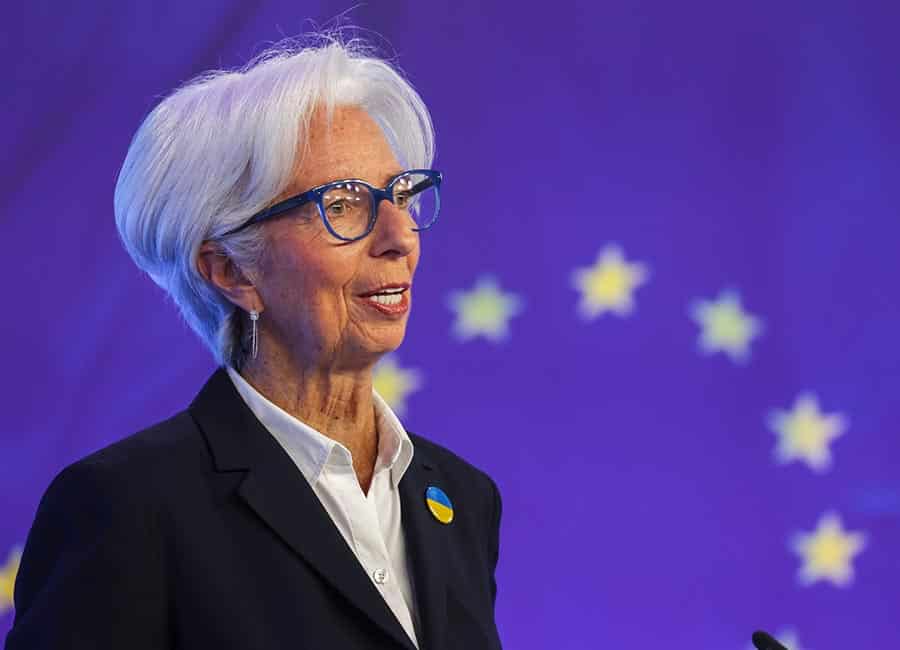The likely ‘pause point’ in the ECB hiking cycle is likely to come at a refinancing rate somewhere between 2.5% and 3.0%, writes Austin Hughes
The decision by the European Central Bank to raise interest rates by 0.75% underpins the sense that the ECB is now set on a largely pre-set course to raise rates materially further in coming months.
Of course, a very unclear geopolitical environment means that circumstances could change markedly, but with the ECB emphasising upside risks to inflation that it says is "far too high and likely to remain above target for an extended period".
The ECB stated that based on its current assessment, over the next several meetings the Governing Council expects to raise interest rates further.
The ECB also indicated that the "major step frontloads the transition from the prevailing highly accommodative level of policy rates towards levels that will ensure the timely return of inflation to the ECB’s 2% medium-term target".
So unless inflation rises sharply, the likelihood is that the scale of rate increases will slow to 50 basis point from this week’s record 75bp rise. We are likely to see 50bp increases at upcoming policy meetings in October and December followed by some further rate rises in the first half of 2023.
At present, the likely ‘pause point’ in the ECB hiking cycle is likely to come at a refinancing rate somewhere between 2.5% and 3.0%. In common with most other central banks, the ECB has moved markedly from a stance of patience to one of panic in relation to its response to higher inflation.
Aggressive policy tightening
As ECB board member Isabel Schnabel articulated, the ECB is now set on a path of "determination" in terms of dealing with inflation. This implies a quite aggressive approach to policy tightening for the foreseeable future.
In turn, this reflects new ECB projections that envisage inflation on both headline and core measures remaining stubbornly above the ECB’s target in 2023 (5.5% headline, 3.4% core) and 2024 (both at 2.3%). Indeed, the detailed projections show headline inflation still at 2.2% at end-2024.
At the same time, the "sacrifice ratio" of economic activity foregone to achieve lower inflation is seen as relatively modest, with ECB projections envisaging euro area GDP growth slipping from a robust 3.1% in 2022 to a still positive 0.9% in 2023 before returning to an above trend growth rate of 1.9% in 2024.
As far as the Irish economy is concerned, the adverse impact of higher interest rates is hugely amplified by broader cost of living pressures globally as well as domestically.
Mechanically, the changed interest payment flows from a sequence of ECB interest rate increases to just over 2% is likely to knock about 1% off consumer spending. It should be noted though that although the quantum of variable rate borrowing is lower than personal deposits, the marginal propensity to spend of borrowers is much larger than that of savers.
My best guess is that the broader ‘precautionary’ impact of rising interest rates could be almost as large as increased nervousness about the economic outlook causes spending to be deferred.
With the ECB willing to tolerate economic weakness to restrain inflation, a weaker external backdrop will be a further channel through which ECB rate increases will slow Irish economic growth.

Economic growth slowdown
Overall, I expect Irish GDP growth to slow from about 9% in 2022 to somewhere between 3% and 4% in 2023.
The ECB has strongly reiterated its determination to restrain inflation even if the causes of runaway consumer prices are largely energy-related and not readily amenable to higher borrowing costs in the euro area.
There is a strong risk that central banks will tighten policy until something breaks. That, in itself, is a strong reason to provide ‘insurance cover’ fiscal policy support to the Irish economy.
A very rough calculation suggests that higher borrowing costs will drain about €1.5-2bn from the Irish economy.
The more significant issue is that this is part of a broader cost of living squeeze that will take about a cumulative €10bn out of Irish consumers’ pockets through 2022 and 2023. In these circumstances, a forceful fiscal policy response will be needed.
+ This note is adapted from Austin Hughes’s presentation to the Irish Accountancy conference











